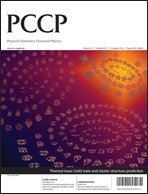We present a general strategy for generating full atomistic models of nanopolycrystalline materials including bulk and thin film. In particular, models for oxide nanoparticles were constructed using simulated amorphisation and crystallisation and used to populate a library of oxide nanoparticles (amorphous and crystalline) with different radii. Nanoparticles were then taken from this library and positioned, within a specific volume, using Monte Carlo techniques, to facilitate a tight-packed structure. The grain-size distribution of the polycrystalline material was controlled by selecting particular sized nanoparticles from the library. The (randomly oriented) grains facilitated a polycrystalline oxide, which comprised a network of general grain-boundaries. To help validate the model, gas diffusion through the (polycrystalline) oxide material was then simulated and the activation energy calculated directly. Specifically, we explored He transport in UO2, which is an important material with respect to both civilian and military applications. We found that He transport proceeds much faster through the grain-boundary and grain-junction network compared with intracrystalline UO2 regions, in accordance with experiment.

You have access to this article
 Please wait while we load your content...
Something went wrong. Try again?
Please wait while we load your content...
Something went wrong. Try again?


 Please wait while we load your content...
Please wait while we load your content...